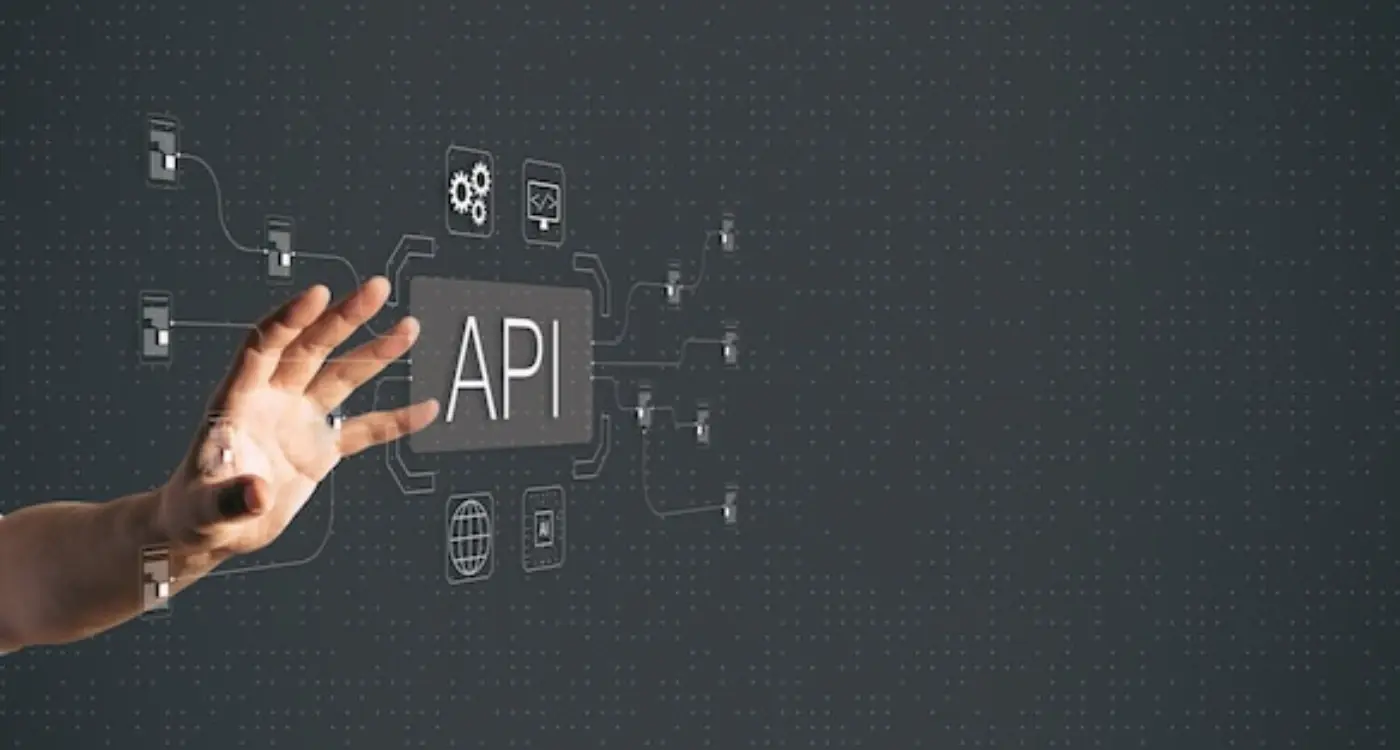How Do I Integrate Property Listings From Multiple Sources Into My App?
Building a property app that pulls listings from multiple sources can feel overwhelming when you first start thinking about it. You've got MLS systems, real estate websites, property management platforms, and dozens of other data sources—all with different formats, update schedules, and access requirements. The good news is that thousands of successful property apps have solved this exact problem, and with the right approach, you can too.
Property listings integration is all about connecting your app to various data sources so you can display comprehensive, up-to-date property information to your users. Think of it like collecting puzzle pieces from different boxes and putting them together to create one complete picture. Some pieces come from MLS databases that estate agents use; others might come from property portals, rental platforms, or even direct feeds from property developers.
The key to successful property listings integration isn't just collecting data—it's making sense of it all and presenting it in a way that actually helps your users find what they're looking for.
What makes this challenging is that each data source speaks its own language. One might send you property prices in pounds, another in pence. One updates every hour, another once a day. Some require special authentication, others are freely available through APIs. The trick is building a system that can handle all these differences whilst keeping your app running smoothly. Over the next chapters, we'll walk through exactly how to tackle each part of this process—from understanding different data integration methods to maintaining data quality once everything's up and running.
Understanding Property Listings Integration
Property listings integration is exactly what it sounds like—bringing together property data from different sources into one place within your mobile app. Think of it like collecting information from various estate agents, property websites, and databases, then displaying it all in your app so users can browse everything without jumping between different platforms.
The main challenge here isn't technical complexity; it's dealing with the sheer variety of how different sources store and share their data. Some property databases use APIs that update in real-time, whilst others might only refresh their information once a day. Some sources include detailed photos and floor plans, others stick to basic details like price and location.
Types of Property Data Sources
Most property apps pull data from three main categories of sources:
- MLS (Multiple Listing Service) systems used by estate agents and property professionals
- Public property databases maintained by local councils and government bodies
- Commercial property websites and portals that aggregate listings from multiple agents
- Direct feeds from individual estate agencies or property developers
- User-generated content where property owners list their own properties
Each source comes with its own set of rules, data formats, and access requirements. Some charge fees for API access, others require you to be a licensed property professional, and a few offer free access but with limited data fields.
Common Integration Challenges
The biggest headache you'll face is data inconsistency—one source might list a property as having three bedrooms whilst another says it has two bedrooms plus a study. Properties can appear multiple times across different sources, sometimes with varying prices or descriptions. You'll need to decide how to handle these conflicts and duplicates before they reach your users.
Working with MLS Systems
MLS systems—that's Multiple Listing Service systems—are the backbone of property data in most countries. These systems hold millions of property listings that estate agents use every single day. Getting access to this treasure trove of data can transform your property app from basic to brilliant.
The catch? MLS systems weren't built with app developers in mind. They were created for estate agents, and the technology often reflects that heritage. Most MLS providers offer APIs, but they vary wildly in quality and ease of use. Some APIs are modern and well-documented; others feel like they haven't been updated since the early 2000s.
Getting MLS Access
You can't just sign up and start pulling data—MLS access requires approval. Most MLS organisations want to know who you are, what your app does, and how you'll handle their precious property listings. The approval process can take weeks or even months, so factor this into your development timeline.
Different MLS systems have different rules about data usage. Some let you cache listings for days; others require real-time requests. Some charge per API call; others use monthly subscription models. Reading the fine print isn't fun, but it'll save you headaches later.
Start your MLS application process early—some providers take months to approve new developers, and you don't want this blocking your app launch.
Technical Considerations
MLS APIs often use older technologies like SOAP instead of modern REST APIs. They might return data in XML format rather than JSON, which means more parsing work for your development team. Rate limiting is common too—you might only be allowed 1000 requests per hour, which affects how quickly you can sync data.
The good news? Once you're connected to a major MLS system, you'll have access to comprehensive, accurate property listings that form the foundation of any serious property app.
Exploring Third-Party Data Sources
Beyond MLS systems, there's a whole world of third-party property data sources waiting to be tapped. These range from commercial real estate platforms like LoopNet and CoStar to rental sites such as Rightmove, Zoopla, and SpareRoom. Each brings something different to the table—commercial properties, residential rentals, international listings, or niche markets like luxury homes.
The beauty of third-party sources is their specialisation. Property portals often have data that MLS systems simply don't cover. Think student accommodation, holiday rentals, or commercial warehouse space. Some focus on specific geographic regions whilst others specialise in property types that traditional MLS databases overlook.
API Access and Data Quality
Most established property platforms offer API access, though the terms vary wildly. Some charge per API call, others require subscription fees, and a few offer free tiers with usage limits. The data quality tends to be mixed—you'll find everything from pristine, standardised datasets to messy feeds that need serious cleaning.
What's interesting is that many third-party sources update more frequently than MLS systems. Property portals often reflect real-time availability because they're directly connected to letting agents and property managers. This can be gold for apps that need up-to-the-minute accuracy.
Integration Complexity
Working with multiple third-party sources means dealing with different data formats, authentication methods, and rate limits. One API might return JSON whilst another uses XML; some require OAuth authentication, others use simple API keys. You'll need to build flexible backend infrastructure that can handle this variety without breaking when one source changes its approach—which they do, more often than you'd like.
Choosing the Right Data Integration Method
Right, so you've looked at your options—MLS systems, third-party APIs, direct feeds from estate agents. Now comes the tricky bit: picking the method that won't come back to bite you later. I've seen too many property apps built on shaky foundations because someone rushed this decision.
The truth is, there's no one-size-fits-all approach here. Your choice depends on three main factors: budget, technical complexity, and how fresh you need your property listings to be. Real-time data integration sounds brilliant until you realise it costs five times more than batch processing and your users are perfectly happy with updates every few hours.
API vs Direct Database Access
APIs are your safest bet for most property apps. They're designed to be stable, documented, and won't break when the data provider updates their system. Direct database connections might seem faster, but they're fragile—one schema change and your entire app stops working.
The best data integration method is the one that works consistently, not the one that works fastest
Batch Processing vs Real-Time Feeds
Here's where I see people get carried away. Real-time property feeds sound impressive, but do your users really need to see a new listing the second it hits the market? For most residential property apps, batch processing every 15-30 minutes is perfectly adequate and much more cost-effective. Commercial property platforms might need faster updates, but even then, you're talking minutes, not seconds.
Remember, the method you choose now will determine how easy it is to add new data sources later. Start with something reliable and scalable, even if it means compromising on speed initially.
Building Your Integration Architecture
Right, so you've chosen your data sources and picked your integration method—now comes the bit where we actually build the thing. This is where many developers get a bit overwhelmed because there are so many moving parts to consider. But don't worry; I'll walk you through the key pieces you need to get right.
Setting Up Your Data Pipeline
Think of your integration architecture as a series of connected pipes that move property data from multiple sources into your app. You'll need an API layer that sits between your app and all these different data sources—this acts like a translator that speaks to MLS systems, third-party providers, and your own database in their preferred languages whilst giving your app a single, consistent way to access everything.
The most reliable approach I've found is to build what's called a microservices architecture. Each service handles one specific job: one pulls data from MLS systems, another manages third-party feeds, and a central service combines everything together. This might sound complicated, but it makes your life much easier when something goes wrong—and trust me, something always goes wrong!
Managing Real-Time Updates
Property data changes constantly throughout the day. Prices drop, listings get removed, new properties appear. Your architecture needs to handle these updates without bringing your app to its knees. The trick is using a queue system that processes updates in the background; your users get fresh data without experiencing any lag or crashes when thousands of listings update at once.
Managing Data Quality and Consistency
Getting property listings from multiple sources into your app is one thing—keeping them clean and consistent is quite another. I've worked on countless property apps where developers thought the hard work was done once the data started flowing in. They quickly discovered that dirty, inconsistent data can make even the most beautifully designed app completely unusable.
The biggest challenge you'll face is that different MLS systems and third-party providers format their data differently. One source might list a property as "2BR/1BA" while another uses "2 bedrooms, 1 bathroom". Property types vary too—some sources use "condo" whilst others prefer "condominium" or "flat". Without proper data normalisation, your users will see duplicate listings or miss properties they're actually looking for.
Data Validation Rules
Setting up validation rules is your first line of defence against poor data quality. These rules check incoming property listings for common issues before they reach your users. You'll want to validate things like property prices (a £50,000 mansion in central London is probably an error), postcode formats, and required fields like address information.
- Check for missing or obviously incorrect property prices
- Validate postcode and address formats
- Flag duplicate listings from different sources
- Standardise property types and features
- Remove or flag expired listings automatically
Maintaining Long-term Consistency
Data integration isn't a set-it-and-forget-it process. Property information changes constantly—prices update, listings expire, and new properties come on the market. You'll need monitoring systems that track data quality metrics and alert you when something goes wrong. Regular audits of your property listings will help catch issues before your users do.
Create a data quality dashboard that shows key metrics like duplicate detection rates, validation failures, and data source reliability scores—this makes it much easier to spot problems early.
Testing and Maintaining Your Integration
Right, so you've built your property listings integration—but here's where the real work begins. Testing isn't just about checking if data flows from point A to point B; it's about making sure your integration can handle the chaos of real-world property data. MLS systems go offline, third-party APIs change their response formats without warning, and property details get updated at the worst possible moments.
Start with automated testing that runs every few hours. Set up alerts for when data stops flowing or when the format changes unexpectedly. I've seen too many apps displaying properties with missing prices or broken images because nobody was monitoring the data feeds properly. Your users will notice these problems before you do if you're not careful.
What to Test Regularly
- Data accuracy across all your sources
- Response times during peak hours
- How your app handles missing or incomplete property data
- Integration performance when one source goes down
- New property additions and updates appearing correctly
Maintenance is the part nobody talks about enough. Property data sources love to update their APIs, change authentication methods, or modify data structures. Keep detailed logs of all your integrations and set up monitoring for each data source. When something breaks—and it will break—you need to know immediately, not when users start complaining.
Monthly Maintenance Tasks
Schedule regular reviews of your integration health. Check error rates, data freshness, and performance metrics. Update any deprecated API calls and test your backup systems. Property markets move fast, and your integration needs to keep up without missing a beat.
Conclusion
Getting property listings from multiple sources into your app isn't exactly rocket science, but it does require careful planning and the right approach. Throughout this guide, we've walked through everything from understanding MLS systems to building solid integration architecture—and hopefully you now feel more confident about tackling your own project.
The key thing to remember is that data integration for property listings is all about balance. You want comprehensive coverage from multiple sources, but you also need to maintain quality and consistency. There's no point pulling in thousands of listings if half of them are outdated or contain errors that frustrate your users.
MLS systems will likely form the backbone of your property listings, but don't overlook third-party data sources that can fill gaps and provide unique value. The integration method you choose—whether it's REST APIs, webhooks, or bulk data transfers—should match your app's specific needs and your team's technical capabilities.
Building robust error handling and monitoring from day one will save you countless headaches down the road. Property data changes constantly, and your integration needs to handle these updates gracefully without breaking your app's functionality.
Most importantly, don't try to do everything at once. Start with one or two reliable data sources, get them working properly, then gradually expand your integration. This approach reduces complexity and gives you time to learn what works best for your particular use case. Your users will appreciate a smaller selection of high-quality, accurate listings over a massive database filled with stale information.
Share this
Subscribe To Our Learning Centre
You May Also Like
These Related Guides

How Do I Handle Property Valuations And Market Data In My App?

Which Social Media APIs Should I Integrate Into My App?



